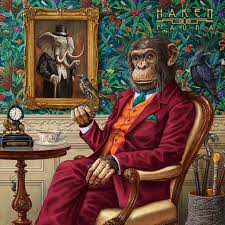Stamp: Fair Dinkum Aussie Alphabet (Part 2) - T is for... (Australia 2016)
Fair Dinkum Aussie Alphabet (Part 2) - T is for... (Australia 2016)
16 August (Australia ) within release Fair Dinkum Aussie Alphabet (Part 2) goes into circulation Stamp Fair Dinkum Aussie Alphabet (Part 2) - T is for... face value 1.00 Australian dollar
| Stamp Fair Dinkum Aussie Alphabet (Part 2) - T is for... in catalogues | |
|---|---|
| WADP Numbering System - WNS: | WAD:AU059.16 |
Stamp is vertical format.
Number in set - 5||(show set). Layout - sheet of 50. Issuing - Australia Post. Printer - McKellar RenownAlso in the issue Fair Dinkum Aussie Alphabet (Part 2) :
- Stamp - Fair Dinkum Aussie Alphabet (Part 2) - A is for... face value 1.00;
- Stamp - Fair Dinkum Aussie Alphabet (Part 2) - C is for... face value 1.00;
- Stamp - Fair Dinkum Aussie Alphabet (Part 2) - L is for... face value 1.00;
- Stamp - Fair Dinkum Aussie Alphabet (Part 2) - R is for... face value 1.00;
- Stamp - Fair Dinkum Aussie Alphabet (Part 2) - T is for... face value 1.00;
Stamp Fair Dinkum Aussie Alphabet (Part 2) - T is for... it reflects the thematic directions:
Mammals are any vertebrates within the class Mammalia (/məˈmeɪli.ə/ from Latin mamma "breast"), a clade of endothermic amniotes distinguished from reptiles (including birds) by the possession of a neocortex (a region of the brain), hair, three middle ear bones and mammary glands. All female mammals nurse their young with milk, secreted from the mammary glands. Mammals include the largest animals on the planet, the great whales. The basic body type is a terrestrial quadruped, but some mammals are adapted for life at sea, in the air, in trees, underground or on two legs. The largest group of mammals, the placentals, have a placenta, which enables the feeding of the fetus during gestation. Mammals range in size from the 30–40 mm (1.2–1.6 in) bumblebee bat to the 30-meter (98 ft) blue whale. With the exception of the five species of monotreme (egg-laying mammals), all modern mammals give birth to live young. Most mammals, including the six most species-rich orders, belong to the placental group. The largest orders are the rodents, bats and Soricomorpha (shrews and allies). The next three biggest orders, depending on the biological classification scheme used, are the Primates (apes and monkeys), the Cetartiodactyla (whales and even-toed ungulates), and the Carnivora (cats, dogs, seals, and allies).
Fauna (pl.: faunae or faunas) is all of the animal life present in a particular region or time. The corresponding terms for plants and fungi are flora and funga, respectively. Flora, fauna, funga and other forms of life are collectively referred to as biota. Zoologists and paleontologists use fauna to refer to a typical collection of animals found in a specific time or place, e.g. the "Sonoran Desert fauna" or the "Burgess Shale fauna". Paleontologists sometimes refer to a sequence of faunal stages, which is a series of rocks all containing similar fossils. The study of animals of a particular region is called faunistics.
Humans (Homo sapiens, meaning "thinking man") or modern humans are the most common and widespread species of primate, and the last surviving species of the genus Homo. They are great apes characterized by their hairlessness, bipedalism, and high intelligence. Humans have large brains, enabling more advanced cognitive skills that enable them to thrive and adapt in varied environments, develop highly complex tools, and form complex social structures and civilizations. Humans are highly social, with individual humans tending to belong to a multi-layered network of cooperating, distinct, or even competing social groups – from families and peer groups to corporations and political states. As such, social interactions between humans have established a wide variety of values, social norms, languages, and traditions (collectively termed institutions), each of which bolsters human society. Humans are also highly curious, with the desire to understand and influence phenomena having motivated humanity's development of science, technology, philosophy, mythology, religion, and other frameworks of knowledge; humans also study themselves through such domains as anthropology, social science, history, psychology, and medicine. There are estimated to be more than eight billion living humans.
Costume is the distinctive style of dress and/or makeup of an individual or group that reflects class, gender, occupation, ethnicity, nationality, activity or epoch—in short, culture.


